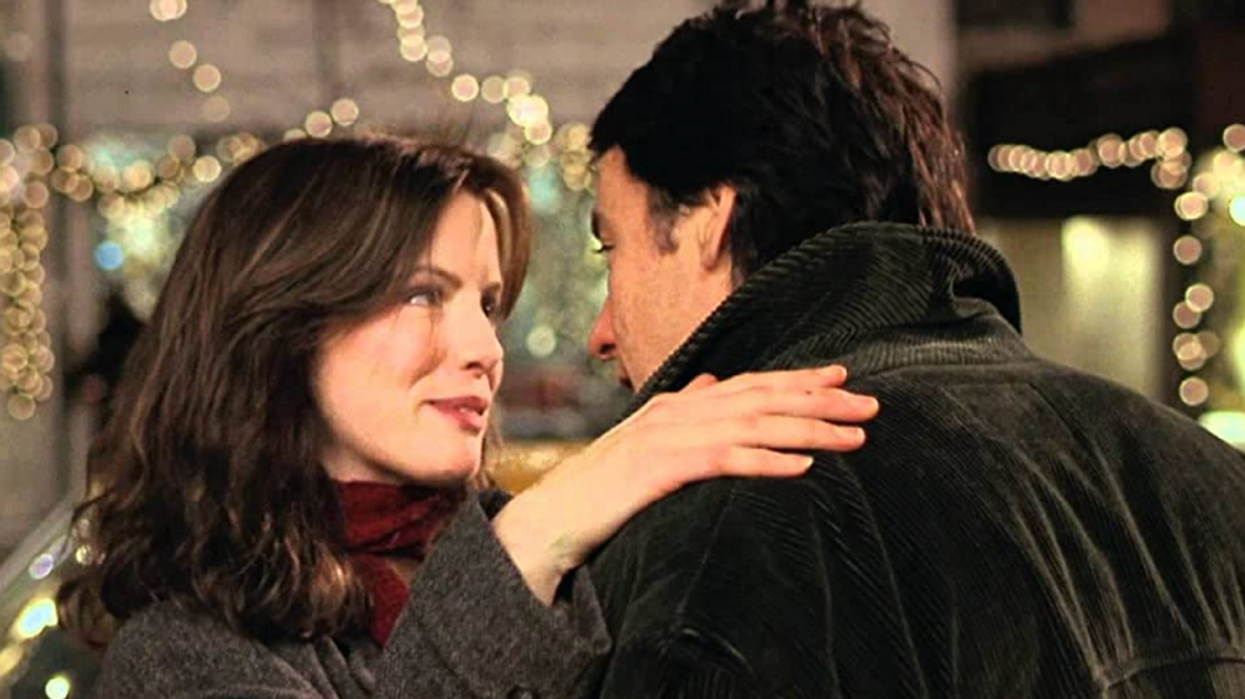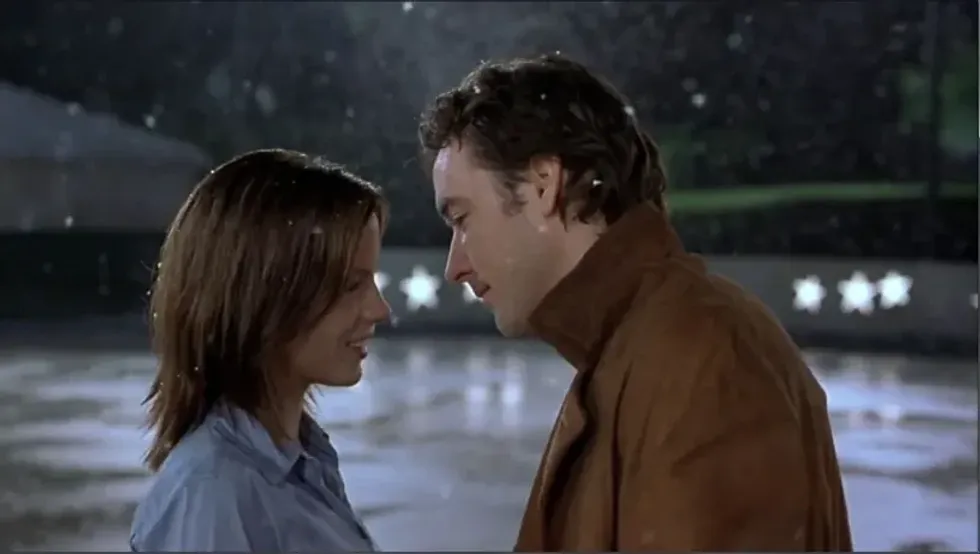This Holiday Movie Has Some of the Best Plant and Payoff of All Time
Holiday movies have to really play with your emotions, and this one delivers over and over.

Serendipity
Every holiday season, my wife and I sit down to watch our favorite classics. While we hit all the usual titles, one we keep coming back to that's a little outside the norm is the John Cusack and Kate Beckinsale movie, Serendipity.
This romantic comedy explores the themes of fate, destiny, and the whimsical nature of love.
And when I put on my screenwriter cap, I can also see how it masterfully uses plant and payoff over and over again to keep the audience interested. The more times you watch it, the more it becomes evident how strategically placed details (the plants) are intricately and beautifully paid off as the story unfolds.
These narrative seeds are sown early in the plot, only to bloom later, adding depth and resonance to the journey of the protagonists, Jonathan and Sara.
Let's explore some of the key plants and their corresponding payoffs in Serendipity, which not only drive the plot forward but also enhance the magical and serendipitous essence of the story.
The Plot of 'Serendipity'
Serendipity is a romantic comedy that weaves a tale of fate and destiny around its protagonists, Jonathan Trager and Sara Thomas.
The story begins with a chance encounter in New York City during the Christmas season, where Jonathan and Sara, both in relationships with other people, meet while trying to buy the same pair of gloves. This serendipitous meeting leads to an instant connection and an evening filled with romance and exploration of the city.
Despite their strong attraction, Sara, a firm believer in destiny, suggests they leave their potential future to fate. She writes her phone number in a book (Love in the Time of Cholera), intending to sell it, and Jonathan writes his on a five-dollar bill, which Sara uses to buy mints. They part ways, letting fate decide if they should meet again.
Years pass, and although they are engaged to others, Jonathan and Sara cannot forget their magical encounter. As their respective weddings draw near, they become consumed with thoughts of what might have been. With the help of their friends, they embark on separate quests to find each other, relying on the slender hopes tied to the book and the five-dollar bill. Their search is laden with near-misses and almost encounters, highlighting the whimsical nature of fate.
The climax of the movie sees a series of fortunate events and serendipitous moments guiding them back to each other, with Jonathan calling off his wedding and Sara dumping her fiance independent of them ever meeting again.
Just when it seems they might never reconnect, fate intervenes, leading to a reunion that reaffirms their belief in destined love, right back at the skating rink where they spent their first night together.
The film concludes with Jonathan and Sara together, at the counter where they both reached for the gloves, embracing the realization that their chance meeting and subsequent journey were orchestrated by the mysterious forces of destiny, beautifully encapsulating the essence of serendipity in love.
The Plants and Payoffs of 'Serendipity'
Serendipity masterfully employs the narrative technique of planting elements early in the story that pay off later. This not only creates a satisfying viewing experience but also keeps the audience engaged, as they look forward to seeing how these planted details unravel.
Let's look at some fun ones from the story.
- Plant: The very first meeting of Jonathan and Sara over a pair of gloves at Bloomingdale's.
- Payoff: This chance encounter sets the foundation for their belief in fate and destiny, driving the entire narrative. And later, the gloves yield a receipt that's used to track Sara. And the glove is reunited with its partner in the final scene.
- Plant: Sara's belief in fate and destiny, particularly her idea of testing fate to determine if they are meant to be together.
- Payoff: The entire storyline revolves around this concept as they both later try to find each other, relying on fate to guide them.
- Plant: Sara writes her number in a book, Love in the Time of Cholera, and plans to sell it, suggesting that if Jonathan can find the book, they are meant to be.
- Payoff: Years later, Jonathan is given the book by his fiance with Sara's number in it. And we also pay off Jonathan's search for the book over and over.
- Plant: Jonathan writes his number on a five-dollar bill, which Sara uses to buy mints.
- Payoff: The bill circulates back to Sara years later, when she's on a plane about to give up looking for Jonathan, thrusting her back into the story.
- Plant: The mention of the constellation Cassiopeia during their first evening together.
- Payoff: This constellation appears again, allowing Sara to realize she needs to leave her fiance and pursue Jonathan.
- Plant: The Waldorf Astoria Hotel where they agree to meet again in a few years if they are meant to be together.
- Payoff: Jonathan visits the hotel as part of his search for Sara. Sara later revisits this spot, showing her lingering connection to Jonathan and their first meeting.
- Plant: The discussion of Cool Hand Luke as Jonathan's favorite movie.
- Payoff: Sara sees the poster for the movie when she's heading home and it begins to pull her back into thinking she should look for Jonathan.
What Can Writers and Filmmakers Learn from This Movie?

'Serendipity'
Miramax
Aside from the big lessons, there's other things I think writers and filmmakers can glean from this movie. Here are some key takeaways:
- Power of the "What If" Scenario: The movie thrives on the intriguing concept of "what if." The film explores the idea of chance encounters and fate, captivating audiences with the possibility of a magical, destined love. This highlights the effectiveness of a strong central question or theme that resonates emotionally with the audience.
- Balancing Romance and Comedy: The movie strikes a balance between romantic and comedic elements. The film's success demonstrates the appeal of blending genres to create a story that can simultaneously tug at the heartstrings and elicit laughter.
- Creating Memorable Characters: The charm and quirks of Jonathan and Sara make them memorable and relatable. Their unique perspectives on fate and love drive the story, illustrating the importance of well-developed characters in driving the narrative forward.
- Significance of Setting: New York City, particularly during the holiday season, is almost a character in itself in the film. The setting provides a romantic and magical backdrop that enhances the story. This underscores the importance of choosing a setting that complements and amplifies the narrative.
- Exploring Universal Themes: The themes of destiny, fate, and love are universally relatable. By tapping into these timeless themes, the film creates a connection with a wide range of audiences.
- Crafting a Satisfying Ending: The film’s conclusion is both satisfying and in line with its thematic focus on fate and destiny. This highlights the importance of a well-crafted ending that resonates with the film’s overall message and leaves the audience feeling content.
The brilliance of Serendipity lies in its ability to transform these small, seemingly inconsequential details into pivotal moments, ensuring that the story remains engaging, cohesive, and enchantingly romantic. And there are so many more lessons to take from this movie.
As viewers, we are left with a deep appreciation for the craft of storytelling, reminded of how the most subtle of plants can lead to the most satisfying of payoffs.
And lots of other lessons.
Let me know what you think in the comments.
- Listen Closely: Taking 'A Quiet Place' From Script to Screen ›
- Five Films, Five Women, and Five Pieces of Advice ›
- Neurotic Quest Serendipity | No Film School ›
















